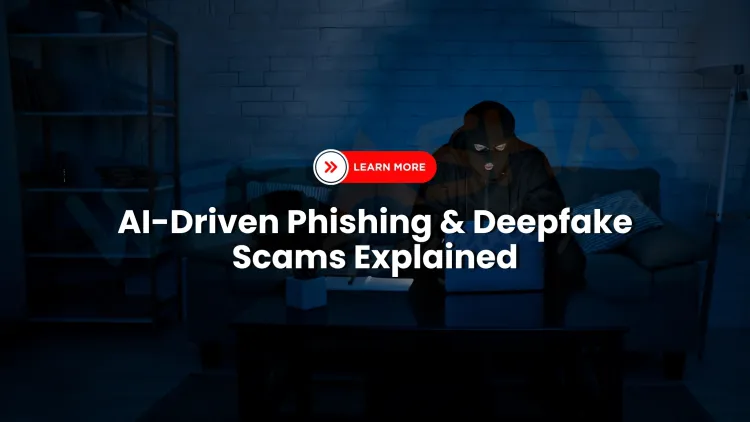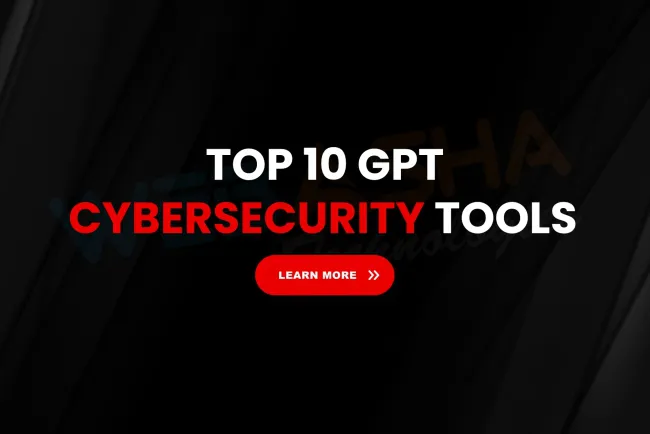What are AI-driven phishing attacks and deepfake scams, and how can I protect myself from them in 2025?
AI-driven phishing attacks and deepfake scams represent a new wave of cyber threats in 2025, where artificial intelligence is used to mimic human behavior, voices, and appearances. Cybercriminals now create hyper-realistic fake videos, voice calls, or emails that impersonate trusted individuals—such as CEOs, coworkers, or loved ones—to manipulate victims. These attacks bypass traditional security filters and exploit human trust, making them dangerous and difficult to detect. Understanding how these scams work and adopting AI-based threat detection tools, employee training, and multi-factor authentication are essential steps in defending against this evolving threat.

Table of Contents
- Understanding the Rise of AI-Powered Cyber Threats
- What Are AI-Driven Phishing Attacks?
- What Are Deepfake Scams?
- Why Are AI-Powered Attacks So Dangerous?
- How Attackers Use AI in Phishing
- Sectors Most Affected
- Protecting Against AI-Driven Phishing and Deepfakes
- The Future: AI vs. AI
- Conclusion
- Frequently Asked Questions (FAQs)
Understanding the Rise of AI-Powered Cyber Threats
The cyber threat landscape is evolving rapidly — and at the center of this shift is artificial intelligence (AI). What once were manual phishing emails or crude impersonation tactics have now transformed into hyper-realistic AI-driven attacks, including deepfake scams and automated spear-phishing. These technologies mimic human behavior and voices so convincingly that even the most tech-savvy users can be deceived.
From fake Zoom calls with a cloned CEO to real-time voice phishing, attackers are now leveraging AI to scale social engineering attacks in ways that are faster, cheaper, and harder to detect.
What Are AI-Driven Phishing Attacks?
AI-driven phishing attacks use machine learning and natural language processing (NLP) to automate and personalize phishing attempts. Here’s how they work:
-
AI mimics writing styles by analyzing publicly available emails or social posts.
-
It customizes phishing content using targets’ data (name, role, interests).
-
Chatbots may even hold live conversations with victims, mimicking customer service agents or co-workers.
Real-World Example
In 2023, an international bank lost over $25 million after a deepfake audio call mimicked the voice of a C-level executive asking a manager to authorize a large transfer. Everything sounded authentic — tone, urgency, and even the background noise.
What Are Deepfake Scams?
Deepfakes use AI-based algorithms, particularly generative adversarial networks (GANs), to create highly realistic fake images, videos, or audio.
Criminals are using deepfakes to:
-
Create fake video interviews to bypass job screenings.
-
Mimic executives on video calls to manipulate employees.
-
Forge identity documents for fraudulent account creation.
Why Are AI-Powered Attacks So Dangerous?
| Factor | AI-Driven Threat Impact |
|---|---|
| Personalization | Phishing emails tailored with individual data |
| Scalability | Thousands of attacks launched with minimal effort |
| Realism | Deepfake audio/video nearly indistinguishable from real |
| Evasion | AI adapts to bypass traditional filters and detection |
Traditional anti-virus software or spam filters may not catch these threats because the attacks don’t use known malware — instead, they exploit human trust.
How Attackers Use AI in Phishing
-
Email Phishing: AI writes highly targeted emails by analyzing your digital footprint.
-
Voice Phishing (Vishing): Deepfake audio clones a voice to demand money transfers.
-
Video Deepfakes: Fake Zoom/Teams calls with synthetic faces or altered backgrounds.
-
Impersonation on Social Media: Bots create fake profiles to extract sensitive info.
Sectors Most Affected
-
Finance: Targeted BEC (Business Email Compromise) with deepfakes.
-
Healthcare: Impersonation of doctors for medical data theft.
-
Recruitment: Fake job applicants with synthetic resumes and interviews.
-
Government: Disinformation campaigns using deepfake politicians.
Protecting Against AI-Driven Phishing and Deepfakes
1. Zero Trust Architecture
Never trust — always verify. Even if someone looks familiar on a call, use a secondary verification like a code or internal messaging app.
2. Deepfake Detection Tools
Use advanced tools like:
-
Microsoft Video Authenticator
-
Deepware Scanner
-
Reality Defender
These analyze facial movements, pixel inconsistencies, and timing glitches in videos.
3. Cyber Awareness Training
Educate employees to:
-
Recognize manipulation cues.
-
Slow down before acting on unexpected requests.
-
Verify identities through multiple channels.
4. AI-Powered Defenses
Deploy AI-driven anomaly detection tools that:
-
Flag unusual email tone or content.
-
Analyze voice/video input in real-time.
-
Correlate cross-platform behavior anomalies.
5. Multifactor Authentication (MFA)
If a user’s credentials are compromised, MFA adds an additional layer of security.
The Future: AI vs. AI
The arms race is real. While attackers use AI to craft deception, defenders are now building AI-powered threat detection and verification tools to detect phishing patterns, scan for deepfake indicators, and adapt in real-time.
As cybercriminals refine their models, defensive cybersecurity must evolve at the same pace, combining threat intelligence, machine learning, and strong human vigilance.
Conclusion
AI-powered phishing and deepfake scams represent a paradigm shift in cybersecurity. These attacks are more convincing, scalable, and dangerous than ever before. But with education, zero trust practices, and AI-powered defenses, organizations and individuals can stay one step ahead.
The key is awareness. If it seems too real to be true, verify — twice.
FAQs
What is an AI-driven phishing attack?
An AI-driven phishing attack uses artificial intelligence to craft realistic, personalized messages or fake identities to trick users into revealing sensitive data.
How do deepfake scams work?
Deepfake scams involve AI-generated videos or voice clips that mimic real people to manipulate victims into transferring money or sharing confidential information.
Why are AI phishing scams more dangerous than traditional ones?
AI phishing scams can adapt language, tone, and context, making them more convincing and harder to identify compared to typical phishing emails.
Can AI be used to detect deepfake scams?
Yes, advanced AI tools can analyze audio and video content to detect manipulation and spot inconsistencies in deepfakes.
What is an example of a deepfake scam?
A common example is a deepfake video of a CEO asking the finance team to urgently wire money to a fake account.
Are AI-driven phishing scams targeting businesses?
Yes, especially mid to large-sized businesses, as attackers can impersonate senior executives or vendors.
How can individuals protect themselves from AI phishing?
Use multi-factor authentication, verify messages through secondary channels, and avoid clicking on suspicious links.
How do voice phishing deepfakes work?
AI models can clone a person’s voice and create convincing audio that mimics real conversations, used in scams via phone calls.
Are email filters effective against AI phishing?
Traditional email filters may not detect AI-generated content. Advanced threat detection systems with behavioral analysis are more effective.
What sectors are most targeted by deepfake scams?
Finance, healthcare, and government sectors are common targets due to high-value data and decision-making authority.
How can companies detect deepfake videos?
Using AI-based forensic tools that scan facial inconsistencies, voice sync issues, and metadata anomalies.
What is the future of deepfake detection?
Ongoing research focuses on real-time detection using machine learning and blockchain-based content authentication.
Can AI scams bypass biometric verification?
Some deepfakes may spoof facial recognition or voice authentication, highlighting the need for multi-layered security.
How common are AI phishing attacks in 2025?
They are rapidly increasing, with reports showing a 300% rise in AI-generated phishing emails in the past year alone.
What is social engineering in deepfake attacks?
It involves using manipulated media and context to exploit human emotions and trust to gain access or influence actions.
Can antivirus software detect deepfakes?
Most traditional antivirus tools cannot; specialized tools with AI capabilities are required.
How should a business train staff against AI phishing?
Regular simulated phishing tests, awareness programs, and encouraging a verification culture are key.
What tools help identify AI-generated emails?
Email security platforms using Natural Language Processing (NLP) and anomaly detection can flag suspicious messages.
How do cybercriminals get voice samples for deepfakes?
They often scrape audio from public videos, interviews, or social media content.
Are chatbots being used in phishing scams?
Yes, malicious chatbots can simulate conversations to steal personal or financial information.
Can AI impersonate someone on a video call?
Yes, real-time deepfake tools can hijack webcams to impersonate another person in live meetings.
Is there legislation against deepfake scams?
Many countries are drafting laws to criminalize malicious use of deepfakes, especially in fraud and harassment cases.
How are law enforcement agencies handling deepfake crimes?
They are using AI-powered forensic tools and collaborating with cybersecurity firms to trace sources and educate the public.
Are AI tools used for both offense and defense?
Yes, cybercriminals use AI for attacks, while defenders use AI for threat detection, analysis, and prevention.
What is multi-modal phishing?
It’s a combination of different attack types—email, voice, video—used in a single phishing campaign.
How can blockchain help prevent deepfake attacks?
Blockchain can authenticate the source and integrity of digital media, preventing unauthorized tampering.
Are mobile users at greater risk of deepfake scams?
Yes, because mobile devices have limited detection capabilities and people often trust phone communication more.
What is the role of Zero Trust in combating AI threats?
Zero Trust architecture requires continuous verification of all users and devices, minimizing the impact of impersonation attacks.
Should organizations monitor employee social media?
While privacy should be respected, educating employees about the risks of oversharing is important.
How to report a deepfake or AI phishing attempt?
Report it to your organization’s cybersecurity team, CERT (Computer Emergency Response Team), or relevant law enforcement.
What is the best defense against AI-based scams?
A combination of user awareness, advanced AI-driven security tools, and verification practices is the most effective defense.














![Top 10 Ethical Hackers in the World [2025]](https://www.webasha.com/blog/uploads/images/202408/image_100x75_66c2f983c207b.webp)








